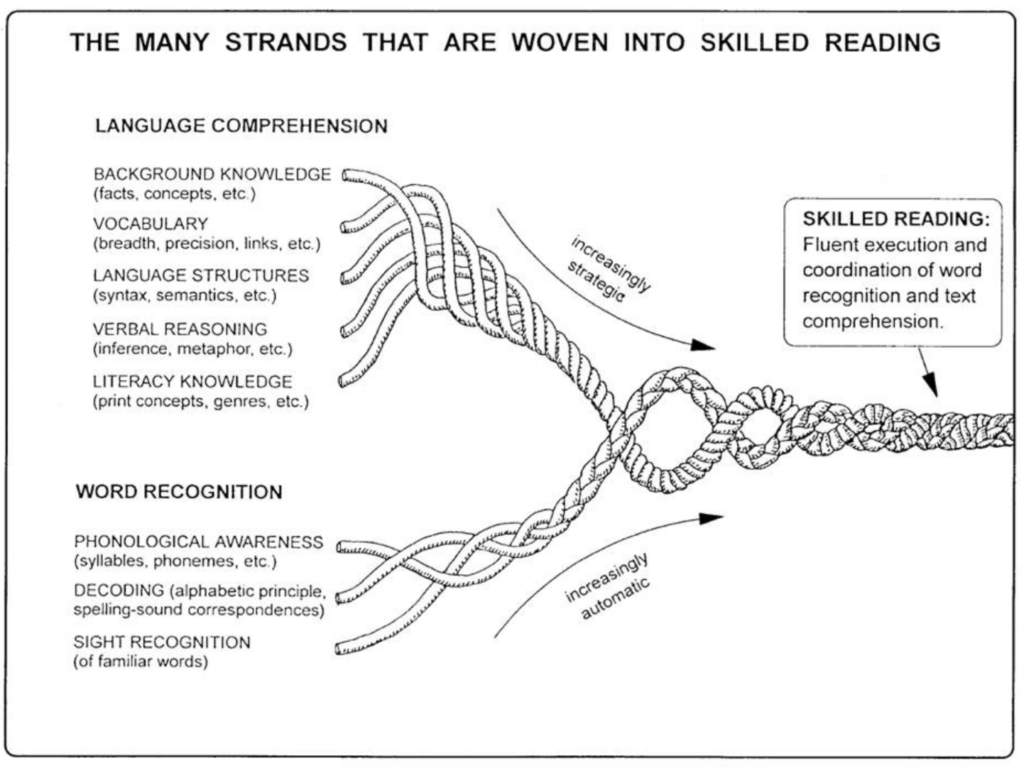
Throughout this course, I often found myself questioning my own practice and approach to literacy instruction. What I loved most about this course is how it revealed the true essence of the Science of Reading and how to effectively implement that theory in the classroom. It provided a clear understanding of the research-based methods that create effective literacy teaching. Scarborough’s Reading Rope (2001) was a huge focus during this course and the importance of each strand, especially for students with reading challenges. It became clearer to me as primary teacher that with this framework we could pinpoint individual areas of need for students and instead of looking at reading holistically, it could be broken down into smaller subsections to be practiced. While I recognize that there is a time and place for Balanced Literacy, this course emphasized the importance of grounding instruction in research-backed strategies. It reinforced the value of using a science-based approach to ensure all students have a solid foundation in reading, setting them up for long-term success.
This assignment provided an overview of the literacy program we were using in our classrooms. I chose to focus on Heggerty Phonics. At the time, our district had mandated the use of Heggerty Phonics but offered little to no training on how to effectively implement the resource. Curious to understand it better, I decided to thoroughly break down the program into sections and conduct research on its effectiveness. My goal was to gather evidence on why this program was critical for literacy development. Through my research, I was able to gain a deeper understanding of the key components of Heggerty Phonics and how it supports foundational literacy skills, helping to ensure that students have the necessary tools for reading success. My district created an assessment tool based on Heggerty and Scarborough’s Reading Rope, which allowed me to assess individual phonics skills and better personalize instruction. This tool enabled me to form small groups based on specific needs. For example, some students needed to develop blending skills, while others needed targeted support with identifying initial sounds. This level of individualized instruction helped me meet students where they were and support their unique literacy development needs.
If I had my time back, I would have been more critical of my analysis during the assignment. Without either of us knowing, another student in the class also did a deep dive into Heggerty Phonics and her analysis was quite different than mine. While my assignment highly favoured the program, hers was more the opposite highlighting some limitations throughout the resource and noted that the research showed that as students started to grow out of the program they lost Heggerty’s critical phonics skills. I’m grateful that we were able to compare, receive feedback and learn from each other throughout the process.
Continuing into this program, I’ve been able to learn more about the Science of Reading and Scarborough’s Reading Rope and apply these theories more vigorously in my own practice.
